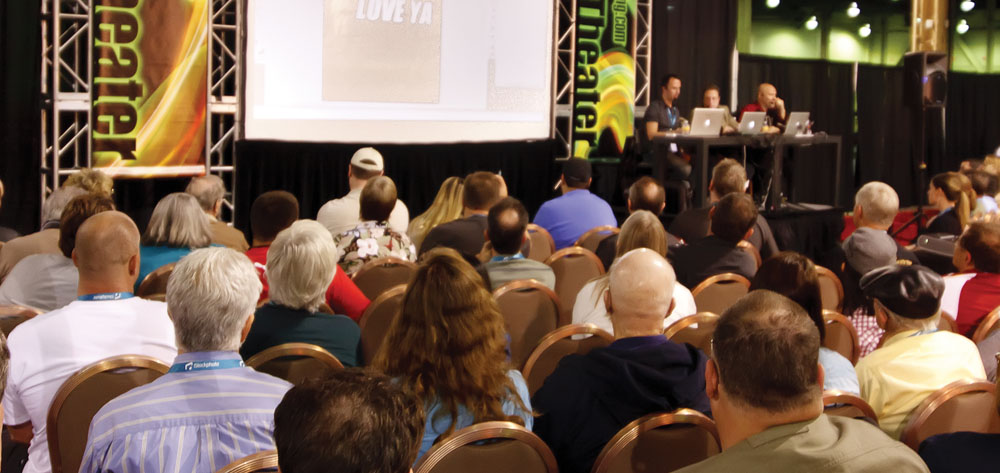Planning and implementing a continuing-education (CE) conference takes a lot of time and energy. But afterward, you’ll feel a great sense of accomplishment knowing you’ve made a difference in your peers’ professional education.
Under the auspices of the American Psychiatric Nurses Association (APNA), the authors and other APNA committee members presented a day-long mental health conference in April 2011. We’re happy to share the lessons we learned from our experience. We found that the keys to hosting a successful conference are:
- paying close attention to details
- assigning responsibilities efficiently and holding people accountable to them
- staying within budget
- taking the time to enjoy yourself.
Creating the planning committee
The first step is to create an effective planning committee. When recruiting members, seek individuals who are energetic, enthusiastic, and easy to work with and who possess the skill set you’re seeking. Aim for a group who collectively possess the right mix of talents, skills, and specialties. Generalist and advanced practice nurses, nurse educators, and nurse administrators bring their own unique perspectives to the table—an asset for conference planning. We sought to recruit some APNA members to our committee because of their organizational knowledge and mental health expertise.
Specific skills and expertise that can be valuable on a planning committee include computer proficiency and experience writing a CE application. We recommend acquiring both “big picture” and detail-oriented individuals. Six members, we found, was the ideal number for our committee. Letting them self-identify which tasks they’d be responsible for promoted timely, efficient completion of critical tasks.
Reserve the conference venue and date early
Be sure to reserve the conference venue early, because availability may be limited for some sites. If possible, choose the venue and date 1 year in advance. When selecting the venue, consider how many attendees you expect, whether you’ll need a single room or several rooms (for breakout sessions), where the registration table will be, whether you’ll have exhibitors or poster presentations, whether you’ll need to provide meals, and availability of audiovisual equipment (such as microphones, projectors, and screens). For our 1-day conference, we decided against holding breakout sessions, preferring instead to have a keynote speaker and four other presenters, including a luncheon speaker.
Ask committee members if a space in their workplace might be available and appropriate as a conference site. For our conference, we contacted various universities; some were asking fees of $600 to $800. Fortunately, we found one that didn’t charge at all and whose layout met our needs, so we opted for that venue.
When deciding which day of the week to hold the conference, balance speakers’ schedules with the likely preferences of conference attendees. We chose to hold our conference on a Saturday, partly because we knew parking would be easier that day.
Set a budget and stay within it
Set the budget when you start planning the conference. We received $2,000 to cover start-up costs, but knew this wouldn’t be enough to cover all expenses. The key to making money from a CE conference is to maximize the number of attendees, as conference revenue comes mainly from registration fees. However, you might be able to recruit sponsors to pay for specific items, such as the coffee break or a speaker’s honorarium. If you’ll offer CE contact hours, be sure to follow guidelines on how to notify participants of the sponsors’ names and roles. (Sponsors shouldn’t influence the contents of the CE offering.)
When setting the budget, include the costs of developing, printing, and mailing the conference brochure; venue charges; food and beverage costs; and speakers’ honoraria and travel expenses. As you finalize the registration fee based on anticipated expenses, decide whether to offer a discount for students and members of the host organization. Another option (and a good way to encourage timely registration) is to offer a discounted “early bird” registration fee. Using an Excel spread sheet can help you track registration and costs.
Choose the conference theme and recruit speakers
Given APNA’s mission, we brainstormed topics related to psychiatric nursing and psychosocial concerns for our conference theme. We eliminated topics covered at recent similar conferences. After much discussion, we decided on trauma as the theme; then we recruited speakers with expertise in trauma assessment and management. Several committee members contacted colleagues while others attended regional conferences to meet experts in the field and potentially recruit them as speakers.
Don’t hesitate to contact well-known experts. Several trauma specialists with nursing credentials agreed to speak at our conference; we confirmed their participation about 9 months in advance. We ended up retaining five speakers for hour-long talks to take place sequentially. One trauma and forensic nurse agreed to present at the conference for only $200; she happened to own a cabin near the conference site and was happy to travel there. It was a way, she said, for her to give back.
Write the CE application
If possible, partner with an organization that’s an accredited CE provider. Their experts can guide you through the process of writing the CE application. Ask committee members if they know of a local hospital or university that’s an accredited CE provider. Our conference CEs were approved by the Pennsylvania State Nurses Association through a committee member’s university, which was the approved CE provider.
Writing the application is time-consuming; the application fee may be $100 or more. So start writing it as soon as the planning committee is established. As speakers, location, and other conference details are confirmed, add this information to the application. Information required on the application includes overall conference objectives; objectives of individual sessions; résumés or biosketches of speakers and committee members; and details on each presentation, including length and content. In our case, it took about 2 months to obtain approval for our application after submission.
Do you want to provide CEs for multiple disciplines, such as social work or medicine? Then be aware that for each discipline, you’ll need to submit a separate application and work with multiple associations. If your target audience is primarily nurses, consider applying only for nursing CE contact hours to save time and money. For nonnurse attendees, either obtain permission to provide credit from the specialty association or provide a certificate of attendance.
Get the word out
We printed a three-fold brochure, double-sided on 8.5″ x 11″ paper, at a cost of about $1.00 per brochure. Bulk mailing requires a minimum of 200 pieces. It can save money, but preparing brochures for bulk mailing can take time and bulk mail is much slower than first-class mail. (See Designing the conference brochure by clicking the PDF icon above.)
E-mailing the brochure saves time and money, but you’ll need an accurate e-mail list. We suggest you e-mail a save-the-date notice 6 months before the conference, e-mail the brochure 3 months in advance, and send a follow-up reminder close to the conference date. If you belong to an organization, e-mail the save-the-date notice to members, as well as to hospitals, universities, and agencies that might be interested. Hand-delivering brochures to hospitals or agencies is a more personal touch and helps ensure the brochures reach the intended recipients. You might want to make each committee member responsible for visiting one or two hospitals or agencies.
We posted our save-the-date and conference registration on APNA’s website for instant advertisement and easy registration access. Another option is to post this information on the organization’s social media outlets, such as Facebook and Twitter; be sure to get the organization’s permission first.
On to the next event
Our conference was a tremendous success, judging by evaluations and personal comments: “Excellent conference.” “Of four conferences I’ve attended in the last 5 years, this by far had the best presentation and group of speakers!” “Very enjoyable and relevant topic.”
We didn’t make money on the conference, which was fine because making money wasn’t our goal. We wanted to make it enjoyable, so we didn’t spare any expense on food and snacks. Committee members enjoyed their camaraderie with attendees and said they’d gladly help plan a conference again.
If you have the time, energy, and opportunity to put on a CE conference, go for it! You’ll find it a rewarding experience.
Visit www.AmericanNurseToday.com for a complete list of references.
Diane M. Haleem is a professor of nursing at Marywood University in Scranton, Pennsylvania. Barbara Buxton is an assistant professor of nursing at the University of Scranton in Scranton, Pennsylvania. Patty O. Hannon is an associate professor of nursing at East Stroudsburg University in East Stroudsburg, Pennsylvania. Todd Hastings is an assistant professor of nursing at Misericordia University in Dallas, Pennsylvania.


















